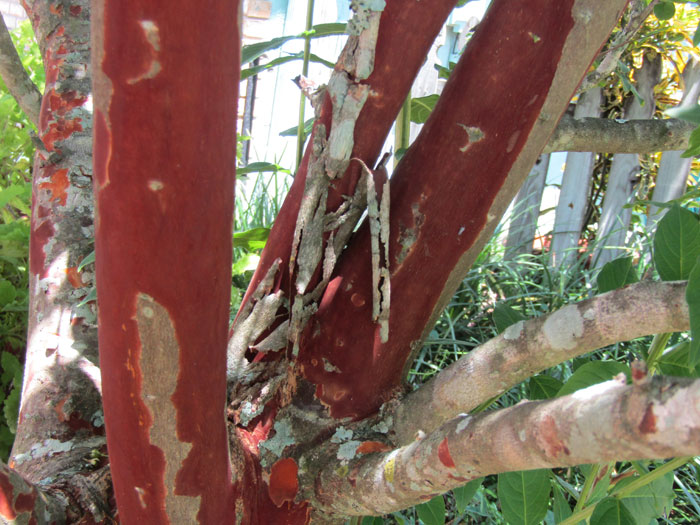If you have drake elms, river birches or crape myrtles and see that the bark is peeling and falling off......don't worry it's normal. As these trees grow they slough off the old bark. Once you know that it's ok you can relax and see the beauty in it. You can use the pieces of fallen bark as mulch.
Lichens can be also be found on the bark and branches of many trees. Lichens are those little patches of pink or a grayish-green material that often has ruffled edges. On citrus you may also find a patches of orange on the underside of the leaves. That is a beneficial fungus called 'red achersonia fungus'.
Spanish or ball moss can be found on just about all of our trees. There is no cause for alarm here either. And if you are very observant you will notice that moss also grows on electrical wires, wood fences or even street lights. It's an air plant that takes nothing from what it is growing on. Now....if you notice that your tree of shrub has more moss than leaves, it's time to look for a secondary problem. It's not a moss problem. The moss just happens to be collecting on an already declining tree.
If you notice a webbing all through a tree or shrub, that's another thing you won't have to worry about. It's an insect called the psocid, another name for them is tree cattle. They can gather in herds on your tree and encase the branches with a beautiful white webbing. The little psocid isn't going to hurt your tree at all.
Finally.....we must mention the cute little anole......you may call them other names like chameleons, little dragons or those scary little monsters all over my patio. They won't cause you or your plants any grief. They are actually doing us a lot of good by helping to rid our yards of insects.....like those awful mosquitoes.

